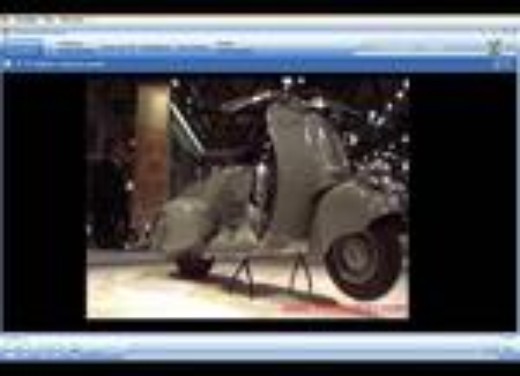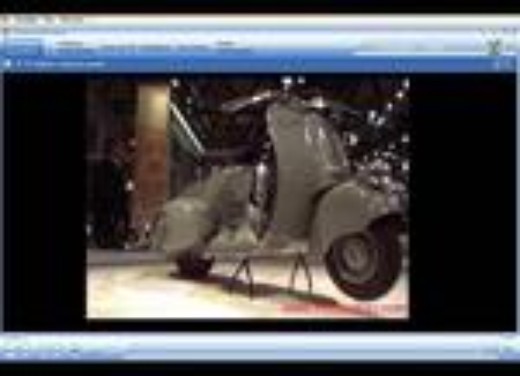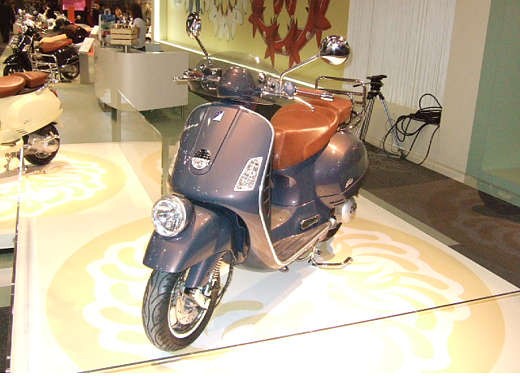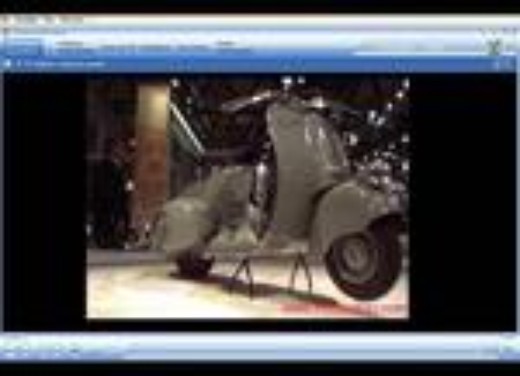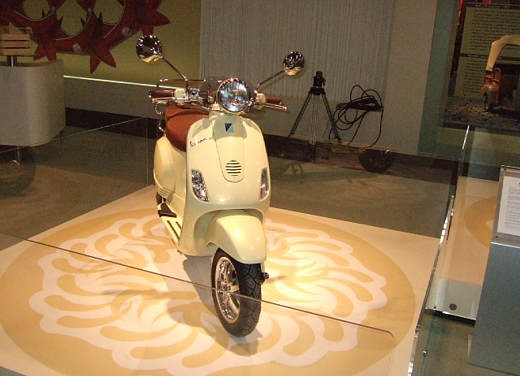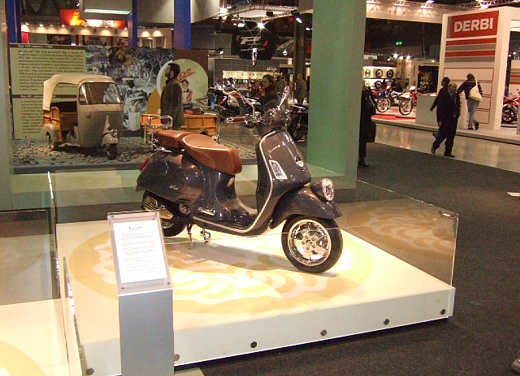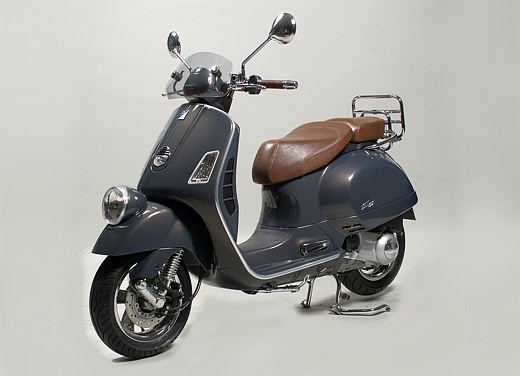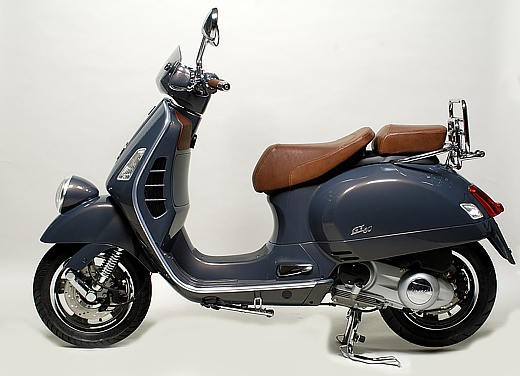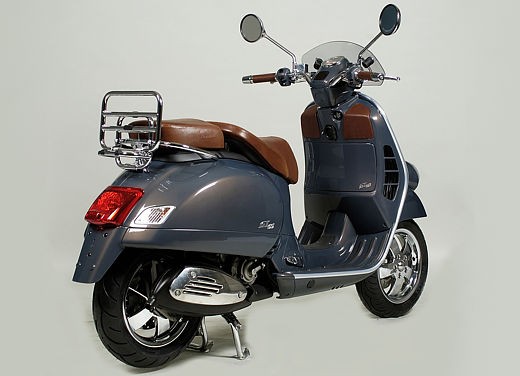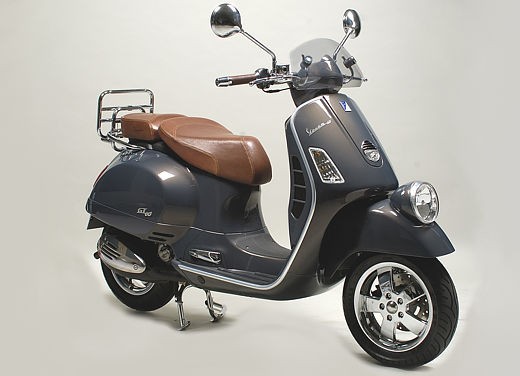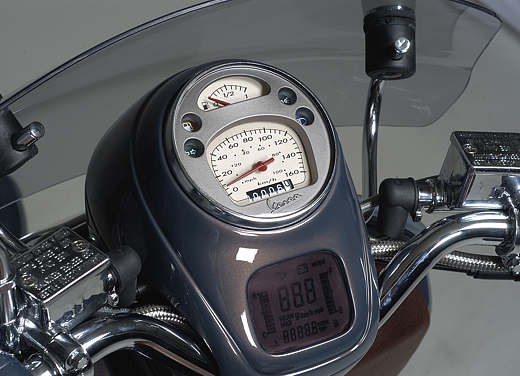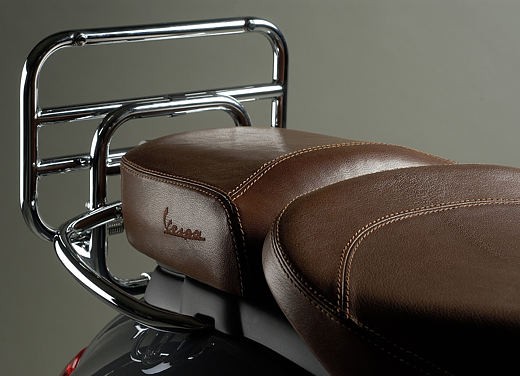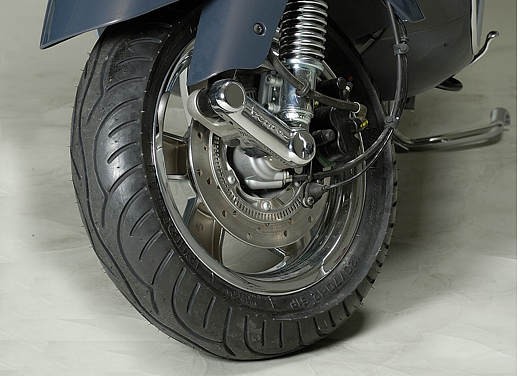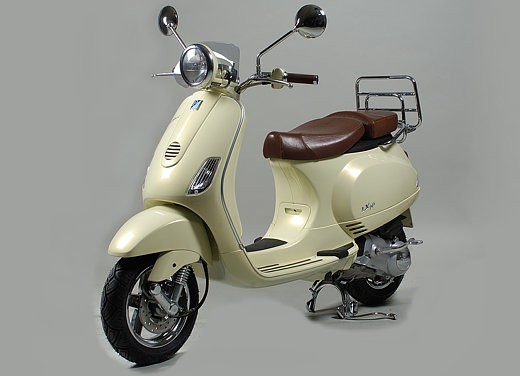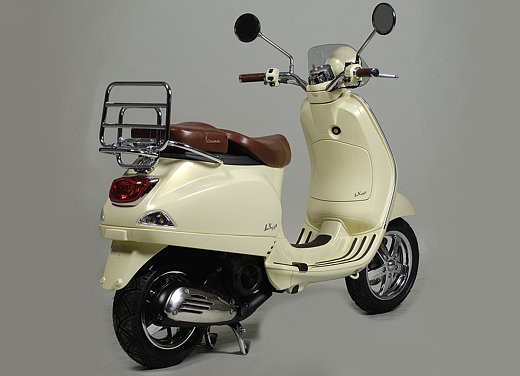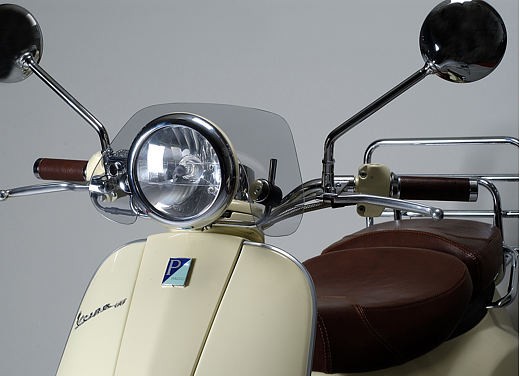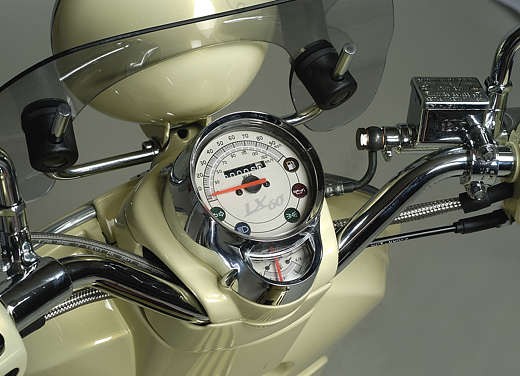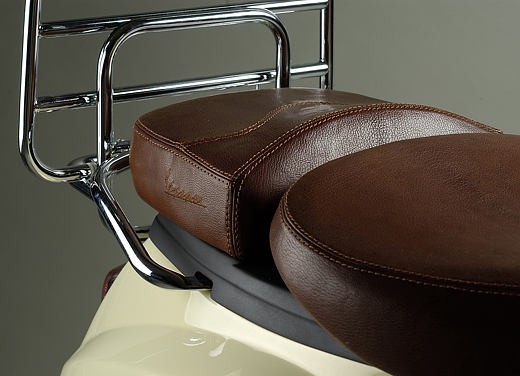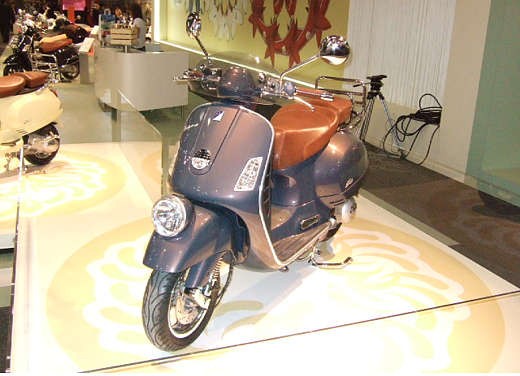Vespa GT-60 ed LX-60

Vespa GT-60 ed LX-60. Sessant’anni e non dimostrarli: questa perfetta alchimia, che farebbe la felicità di ogni donna, è invece artefice del successo di un marchio storico come Vespa. Un capolavoro nato nel 1946 che si è saputo evolvere nel corso delle epoche senza risultare stravolto nella sua fisionomia originaria. Antenata dei moderni scooter, Vespa ha creato un segmento destinato a tutti, assumendo i connotati di veicolo “universale” capace di superare indenne anni di evoluzione tecnica e stilistica. Nel suo 60°mo anniversario la casa di Pontedera presenta due stupende “show bike” all’EICMA di Milano, un tributo alla tradizione rivista in chiave moderna.
Vespa GT-60: ritorno alle origini Sviluppata sulla base del modello GTS 250 i.e. la Vespa GT-60 è un tributo alla capostipite del modello. Il telaio metallico, fiore all’occhiello di Vespa, non subisce interventi particolari mentre gli elementi stilistici che hanno seguito le mode dettate dal tempo hanno subito un’operazione di “ritorno al passato”. Ecco allora il mitico gruppo ottico integrato nel parafango anteriore come sul prototipo del ’46, mentre il manubrio tubolare a vista pur richiamando il modello originario strizza l’occhio all’odierno mondo motociclistico.
Il tachimetro/contachilometri si compone di uno strumento analogico circolare, con una grafica moderatamente retrò, integrato da un attualissimo display per tutte le informazioni relative alla marcia. Vespa nasce come veicolo monoposto che all’occorrenza poteva essere trasformato in biposto, e questo ha costituito un fortissimo elemento di caratterizzazione per tutte le prime generazioni. Su GT-60 la sella torna ad essere scomposta in due porzioni distinte: quella per il guidatore e quella per il passeggero. Il suo rivestimento in pelle con raffinate cuciture a vista sottolinea la cura per il dettaglio e la maestria dei nostri artigiani pellai in questo tipo di realizzazioni.
Anche la scelta del colore per la verniciatura del veicolo è stata influenzata dalla storia unica di Vespa: così come i primi prototipi della Vespa erano colorati con un grigio di derivazione aeronautica, anche GT-60 si veste di grigio: una tonalità moderna con una metallizzazione particolare, capace di valorizzare forme e proporzioni del sinuoso corpo in acciaio.
Vespa LX-60: una generazione che ha cambiato il mondo La Vespa LX-60 è stata concepita come rivisitazione della generazione Vespa degli anni ’60. Un decennio segnato da numerose rivoluzioni sociali e culturali, che ha visto tra le alte cose la consapevole emancipazione dei giovani: oggi come allora libertà fa rima con Vespa.
Come sulla GT-60, anche in questo caso gli interventi hanno riguardato esclusivamente le parti accessorie al corpo metallico. Il gruppo ottico rimane nella posizione originale, solidale al manubrio come sugli scooter degli anni a cui Vespa LX-60 si ispira, ma in una versione più snella e minimale per evidenziare il manubrio a vista ed alleggerire la vista anteriore del veicolo. La strumentazione è composta da un elemento analogico racchiuso in una cornice cromata mentre la grafica, totalmente inedita, riprende quelle in voga negli anni ‘60.
Il manubrio in vista è costituito da un tubo cromato che si integra con nuove manopole rivestite da fine pellame, lo stesso utilizzato per il rivestimento della sella. Questa, come sui primi modelli, mantiene la separazione fra la porzione riservata per il guidatore e quella per il passeggero.
Pezzi unici Vespa GT-60 ed LX-60 rimarranno, com’è giusto che sia, dei modelli da esposizione. Un meritatissimo premio alla carriera, per un mito che ha segnato nel bene o nel male la storia italiana dal dopoguerra ad oggi, dimostrazione lampante di come il design e la tecnica made in Italy possano farsi apprezzare nel mondo anche a sessant’anni di distanza.
The Vespa of 1946 was already a masterpiece. In a few years’ time, the name of this unique, innovative product would come to symbolize Europe’s post-war reconstruction. Over the decades, the Vespa would become an icon of youth culture, a means for women to mark their independence and an emblem of Italian style and design worldwide.
The Vespa was a product of technical genius in the aeronautics sector, where design was indissolubly linked to function. Over the years, the Vespa’s design and technical evolution have left the original stylistic and mechanical bases untouched. Now, 60 years on, the Vespa continues to be an innovative product and a perfect example of industrial design in terms of its concept, shape and production technology.
The passing decades have turned the Vespa’s strong concept, expressive styling and unequalled success worldwide into a legend featured in countless films, photographs, advertising campaigns and art and design exhibitions. As the Vespa prepares to turn 60 in 2006, Piaggio presents two striking show bikes at the Milan show: the Vespa GT-60 and Vespa LX-60. Through a clever re-interpretation of some of the typical design and technical elements of the past, particularly the 1950s and 1960s, these prototypes evoke the romance of the past in timeless Vespa fashion. The Vespa GT-60 and Vespa LX-60 are a tribute to this legendary product, the result of purely Italian creativity and design.
Vespa GT-60 Developed on the base of the Vespa GTS 250, the GT-60 pays homage to the very first scooter, the 1946 Vespa. The latest step in the Vespa’s evolution, the 140th Vespa model — the GTS 250 i.e. — offers the perfect base for this design exercise. The Vespa’s fundamental strong point, an all-metal chassis, has been left untouched. The changes concern all the details that have been modified over the years to keep up with technological and design trends in various periods.
On the very first prototype in 1946 the headlamp was positioned on the front mudguard, moving to the handlebar in the mid-1950s. By placing the headlamp on the front mudguard once again, the Vespa GT-60 makes a clear reference to the origins of the Vespa, while the size and the lamp surface are suited to the modern styling of the Vespa GTS. A similar change has been made to the handlebar, a simple, visible metal tube on the very first Vespa prototype. This typically motorcycle/cycle feature could be seen on each early Vespa series. The GT-60 also uses a ‘naked’ handlebar, but one of modern motorcycle inspiration.
The round analogue speedometer-mileometer has relatively retro graphics, plus an up-to-date ride information display and electrical system. The saddle has been comprehensively redesigned. The Vespa started out as a single-seater that could be changed into a two-seater and remained this way for quite some time. On the GT-60 the saddle goes back to being split into two distinct parts, one for the rider and one for the passenger. Upholstered in leather with stylish stitching, it emphasises the skill of Italian leather craftsmen. The paint on the vehicle also recalls the Vespa’s unique history. Like all the early Vespa prototypes, painted an aeronautic grey, the GT-60 is grey, albeit a warm, modern shade of iridescent metallic grey to flatter the design of its all-metal body.
Vespa LX-60 Developed on the base of the 2005 Vespa LX, the LX-60 has been conceived as a tribute to the 1960s Vespas. The 1960s: a legendary decade that witnessed the social and cultural revolution that shaped contemporary society, marked by the emergence of youth for whom the Vespa symbolised individual mobility and freedom. As on the Vespa GT-60, the changes concern the accessory parts to the metal body, recently renewed on the LX series.
The headlamp remains in its original position on the handlebar, like the 1960s scooters from which the Vespa LX-60 is derived, but in a slimmer, more minimalist version to emphasise the unfaired handlebar and make the front of the vehicle a more lightweight look. The analogue instrumentation is placed in a chrome-plated frame while the unique graphics resemble those in vogue in the 1960s. The ‘naked’ handlebar is a metal tube ending in fine leather handles, also used on the saddle that separates the rider and passenger seats as on the early models.

